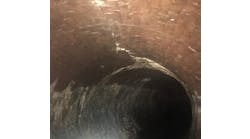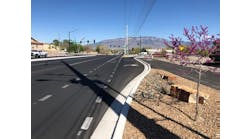During last summer’s 2000 Olympic Games, U.S. Filter Australia/Vivendi Water supplied a wastewater reclamation plant that recycled sewage and rainwater runoff at the games site in Homebush Bay, west of Sydney. Part of the purification process involved the use of reverse osmosis (RO) technology from Dow Chemical Company.
The recycled water was used for irrigation and toilet flushing at the Olympic Games Village and the Homebush Bay Olympic Games facilities. This was part of the Sydney 2000 Olympic Games’ commitment to an environmentally friendly event that conserved resources, including water. The water recycling plant came on line in May of 2000, and definitely had a positive effect on the Australian landscape.
Part of the Sydney Organizing Committee for the Olympic Games (SOCOG) bid package included a commitment to maximize the use of recycled water. Known as "The Water Reclamation and Management Scheme" (WRAMS) at the Olympic Games site, it was an important environmental initiative at the 2000 Games. The WRAMS system provided 800 ML/year or the same amount of water needed to fill 258 Olympic-sized swimming pools. U.S. Filter Australia/Vivendi Water designed and installed the system that incorporates FILMTEC® RO membrane elements.
The conservation of water was a key factor in the design of all Sydney Olympic Game venues. All of the engineering teams were required to demonstrate that their designs incorporated water conservation solutions.
Organizers incorporated many ways to save water. One method was the installation of more efficient appliances and fittings, including water flow reduction valves and shower hoses, dual flush toilets, roof-fed rainwater tanks, and drip irrigation. Native trees and shrubs were planted for their aesthetic appeal, but also for their drought resistant qualities. But the most important part of the water conservation effort was the recycling plant.
The water treatment plant was designed to produce 7.5 ML/day of filtered water and 2.0 ML/day of desalinated water. The plant handled a mixture of treated and reclaimed sewage water and surface water runoff. To achieve the required purity of the final treated water, a dual membrane process was used.
The dual membrane process used Memcor CMF microfiltration technology and reverse osmosis, with fouling resistant FILMTEC membranes from Dow Chemical Company. The U.S. Filter CMF microfiltration unit allowed continuous filtration down to 0.2 microns. But to purify the water to the molecular level, the next step was reverse osmosis. The source of the water necessitated the use of Dow’s special fouling resistant membrane technology.
Natural conditions worked against the Olympic organizers. Sydney’s warm weather, its nutrient-rich water, and the presence of microorganisms negatively impacted the efficiency of standard RO purification units. The Dow RO process used membranes made from a thin-film composite polyamide material.
Bio-fouling is a buildup of biological materials inside the membrane elements. This fouling blocks the flow of water through the membrane and affects the production of fresh water. A single, viable microorganism replicating every 20 minutes under ideal conditions can produce a progeny and plugging legacy in excess of 4.7 x 1021 within 24 hours.
The biological species of concern for RO system operators are those that adhere to the inside of the membrane surface and excrete a sticky mass known as "extracellular poly saccharides." This sticky film traps nutrients for the microscopic creatures that create them, kind of like a very small spider web. The film also provides a protective layer that prevents biocides from killing the organism as if it were in a free state.
These contaminating biofilms can grow to a thickness of up to a millimeter between membrane leaves. One millimeter does not sound like much but within the tight tolerances of RO membrane leaves, it is significant. Inside the closed spaces containing several hundred feet of separation media, water purification efficiency is reduced significantly. This biomass blocks the feed water channel and inhibits water passage through the membrane. Even cleaning the membranes every two weeks is only marginally helpful in restoring performance of bio-fouled elements.
Because the FILMTEC Fouling Resistant (FR) membrane is a surface modified polyamide that resists bacterial adhesion, this extended the time between membrane cleaning and increased cleaning efficiency. In addition, it maintained high salt rejection and the productivity performance of standard RO elements.
The FILMTEC FR elements are constructed using automated element construction. The use of automation results in a higher level of precision, impossible to achieve using traditional manual manufacturing methods. Because of this level of precision there are fewer gaps inside the membrane for organisms to set up housekeeping.
In traditional hand-rolled membranes, there are more spaces for organisms to grow and the rougher surface area provides a better place for the organisms to stick and cultivate.
The incorporation of RO technology helped SOCOG purify water that otherwise would have been wasted. Dow’s role in Sydney helped organizers achieve their "green" goals for this environmentally friendly event.


